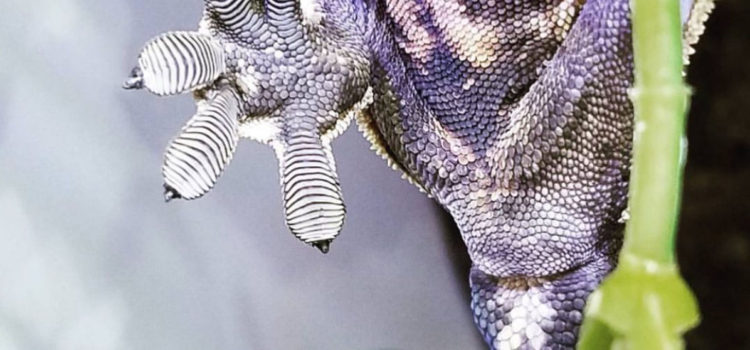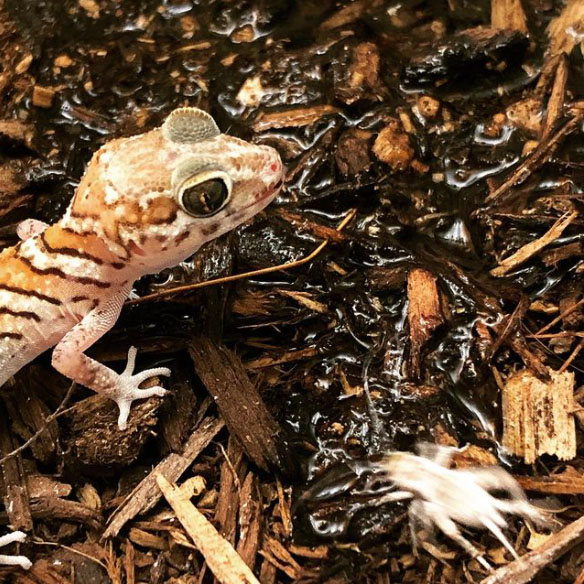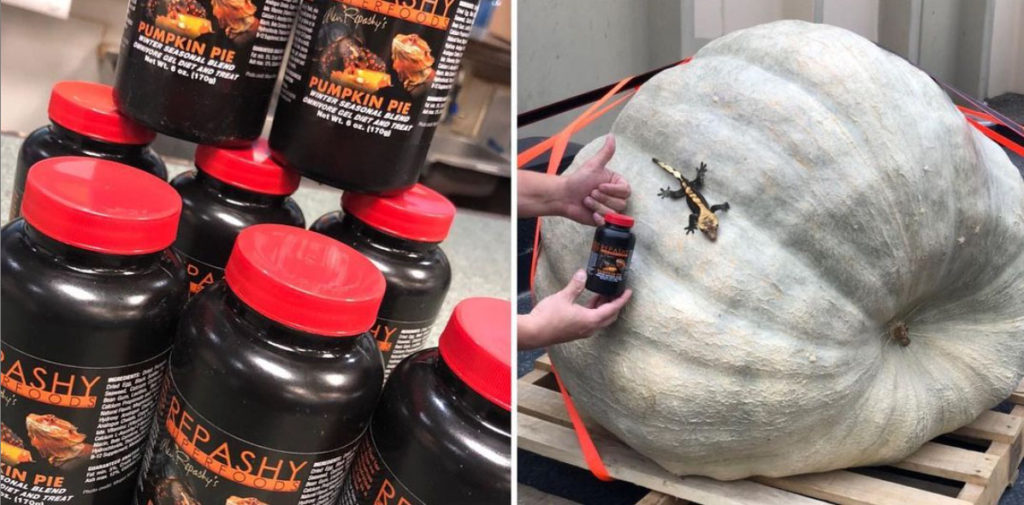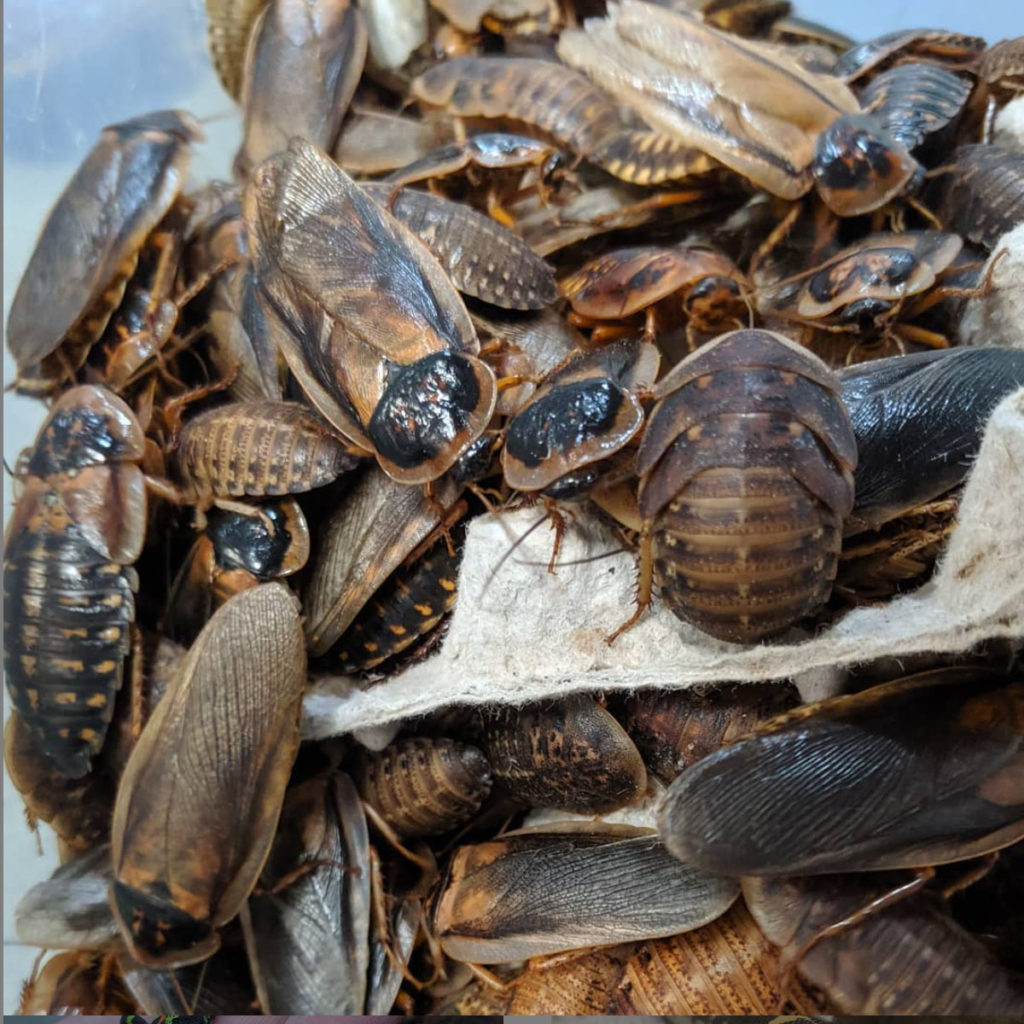
Many people are aware of the need to “dust” insects, such as crickets, with calcium powder before feeding them to their insectivorous reptiles. However, there’s more to it than just the amount of calcium; it’s also the ratio of calcium to phosphorus (Ca:P ratio), Vitamin D3, Vitamin A, Vitamin E, and Vitamin B1 typically deficient in commercial feeder insects. UVB lighting and adding these nutrients into their diet can help your reptile live a long, healthy, pain free life. Let’s go over some of the basics of supplementation.

(This baby pictus gecko sees a calcium dusted cricket run into view)
“Insects in nature are indiscriminate eaters. They eat a broad range of plants, roots, and other insects absorbing the benefits of their broad range of food into the makeup of their bodies throughout their lifespan. If they’re unfortunate enough to be snagged by a hunting reptile, they’re delivering the vitamins and minerals they’ve assimilated into their tissue directly to the reptile in a natural form.” -Timberline
Commercially bred insects do not receive the benefit of this broad diet throughout their lives, so us as reptile keepers must compensate for that by dusting and gut loading.
Gut loading is done simply by allowing the feeder insects to eat a full meal of nutritious food before feeding, to ensure their digestive tract is full of the good stuff when they are eaten. I have used Sticky Tongue Farms Vit-all in the past, but it has become harder to obtain in recent years so I have moved to the Repashy line of insect gutload products, this includes Superload, Hydroload, and Bug Burger. Additionally we provide nutrient dense vegetables that are high in vitamin A, including red bell pepper and butternut squash. This also helps ensure our feeder insects are well hydrated, thus properly hydrating our reptiles.
Dusting is done by coating the feeder insects with supplement powder right before a feeding. We use a cup with a small amount of dust sprinkled in the bottom and “swish” or “swirl” the insects around until they are fully coated. Then they can be dispensed straight from the cup into your animals habitat!
Dust with a vitamin-mineral powder which contains, at minimum, appropriate levels of calcium and vitamin D3. There are a lot of different dusts on the market, we recommend the Repashy line as that is what we use ourselves. Calcium plus is a great maintenance dust, as it is designed to make feeder insects more balanced in all nutrients, not just calcium. We use this in conjunction with SuperCal (LoD) for our geckos that don’t get as much access to UVB. SuperCal (NoD) is what you use if you were to free feed calcium from a dish, as it has no vitamin D3 in it. Female reptiles especially will appreciate free access to a pure form of calcium. RescueCal+ would be the best choice for reptiles that are starting to show problems from lack of calcium, or that you suspect may have not been receiving proper supplementation.
One missed dusting is not the end of the world, but if feedings are habitually missed, that is bad.

Every time your reptile eats any amount of phosphorus, they need an equal amount of calcium to process that phosphorus. Most feeder insects on their own are very high in phosphorus. Large crickets, for example, are about 1 part calcium to 9 parts phosphorus. This means any time you are feeding undusted crickets you are creating a calcium deficit. A Ca:P level of 2:1 will allow your animals body to not only process phosphorus, but have some leftover calcium to utilize in healthy growth and maintenance including strong bones, organ function, and for breeding age females will assist in egg formation.
Finally, let’s look at the calcium to phosphorus ratio of some of our favorite feeder insects
Insect- Calcium:Phosphorus
Superworms- 1:18
Mealworms- 1:7
Mealworm pupae- 1:10
Mealworm giant- 1:3.5
Hornworms- 1:3
Waxworm- 1:6
Nightcrawler- 1.5:1
Crickets- 1:9
Cricket pinheads- 1:6
Dubia roach- ?
American cockroach- 1:2.5
Housefly (curly wing fly)- ?
Housefly larvae- 1:3
Fruit fly (flightless)- 1:10
Fruitfly larvae- 1:3
Phoenix worm (soldier fly larvae)- 1.5:1
However, don’t forget to take into account the full picture, including gut loading, protein, and fat content. A superworm may not necessarily make a great staple feeder due to the high levels of phosphorus, but it can still be a great part of a properly supplemented, varied diet due to it’s large digestive tract that allows for ample gutloading.

Until next time….
